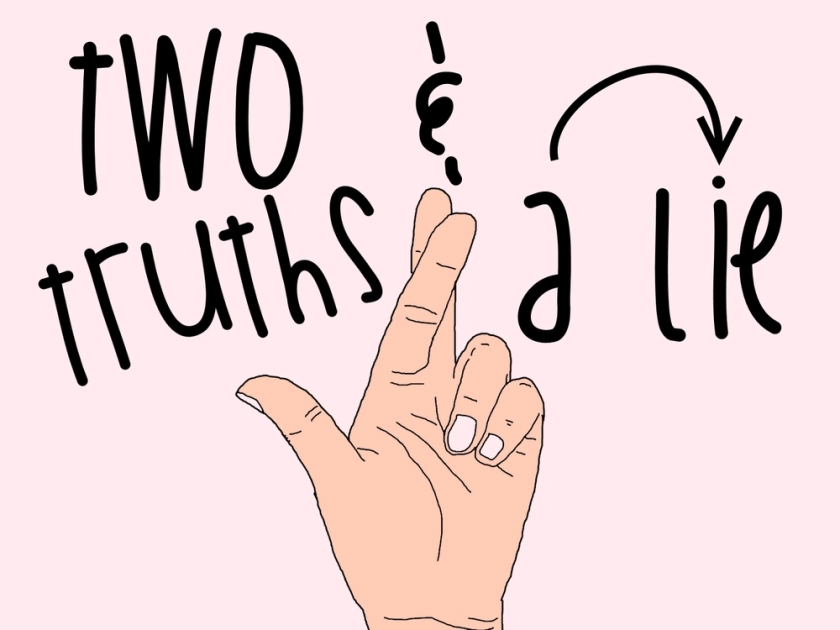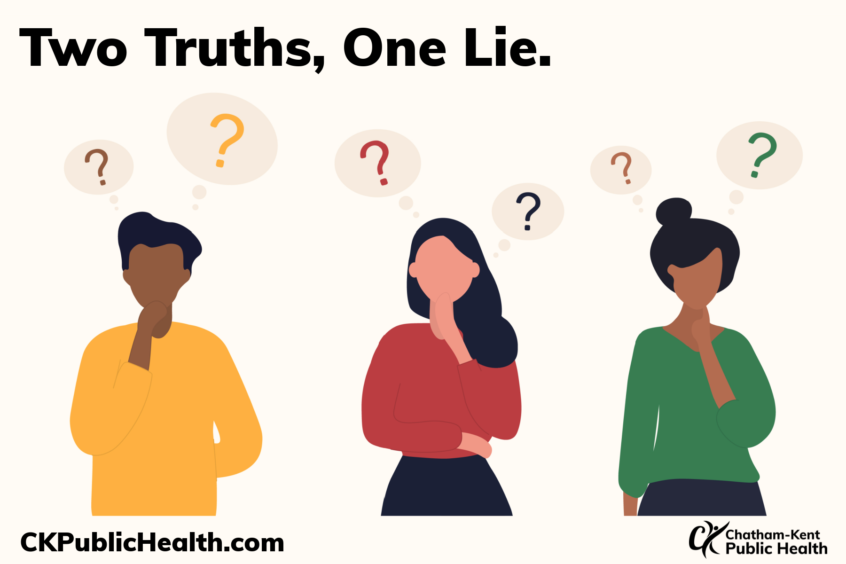
Players: Multiplayer
Procedures:
The procedures of the game involve each player sharing three statements about themselves, two of which are true and one of which is false. The other players must then guess which statement is the lie, and the person who successfully deceives the most players wins the game.
Rules:
The main rule is that each player must share two true statements and one false statement, including the scoring system and any restrictions on the statements that can be shared.
Resources:
The resources of the game are the players’ personal experiences and the language used to communicate them. Each player must draw from their own experiences and creativity to create their statements.
Boundaries:
The boundaries of the game are defined by the players’ willingness to share personal information and the rules established to ensure a safe and respectful environment. Players must avoid sharing statements that are offensive, insensitive, or harmful in any way.
Objective: successfully deceive other players and identify the lies of others. The game encourages players to engage in conversation and build connections through a game that revolves around sharing personal experiences and identifying falsehoods.
Outcome: social interaction and bonding, with players getting to know each other on a deeper level. The game creates a low-pressure environment where players can open up to each other in a lighthearted manner and develop stronger relationships.

Theme: social interaction and communication, specifically the art of storytelling and deception.
Mechanics:
The mechanics of Two Truths and one lie involve each player sharing three statements about themselves, two of which are true and one of which is false. The other players must then guess which statement is the lie, and the person who successfully deceives the most players wins the game.
Kind of fun promised to the player:
The game promises social and interactive fun, where players can bond with each other through storytelling and deception. It encourages players to learn more about each other and develop stronger relationships.
How they created this type of fun: by providing a low-pressure environment where players can open up to each other in a lighthearted manner. It creates a sense of excitement and anticipation as players attempt to deceive each other and guess which statements are true or false.
Reinforced through graphic design decisions: There isn’t much graphic design in this game.
Differentiation from other games in the genre: focusing on storytelling and personal connections rather than competition or strategy. It offers a unique and simple gameplay experience that can be enjoyed by players of all ages and backgrounds.
Handling abuse:
While Two truths and one lie may not have explicit measures in place to handle abuse, the game’s low-pressure and non-competitive environment helps to minimize the risk of harmful behavior. Players can choose to keep their statements light and non-controversial, and the focus on storytelling and personal connections helps to build trust and respect among players.
Improvements: the game could consider implementing additional rules and procedures to prevent abuse and harmful behavior. For example, players could be encouraged to use a “safe word” to indicate when a statement is off-limits or triggering, and moderators could be assigned to monitor gameplay and intervene if necessary.


